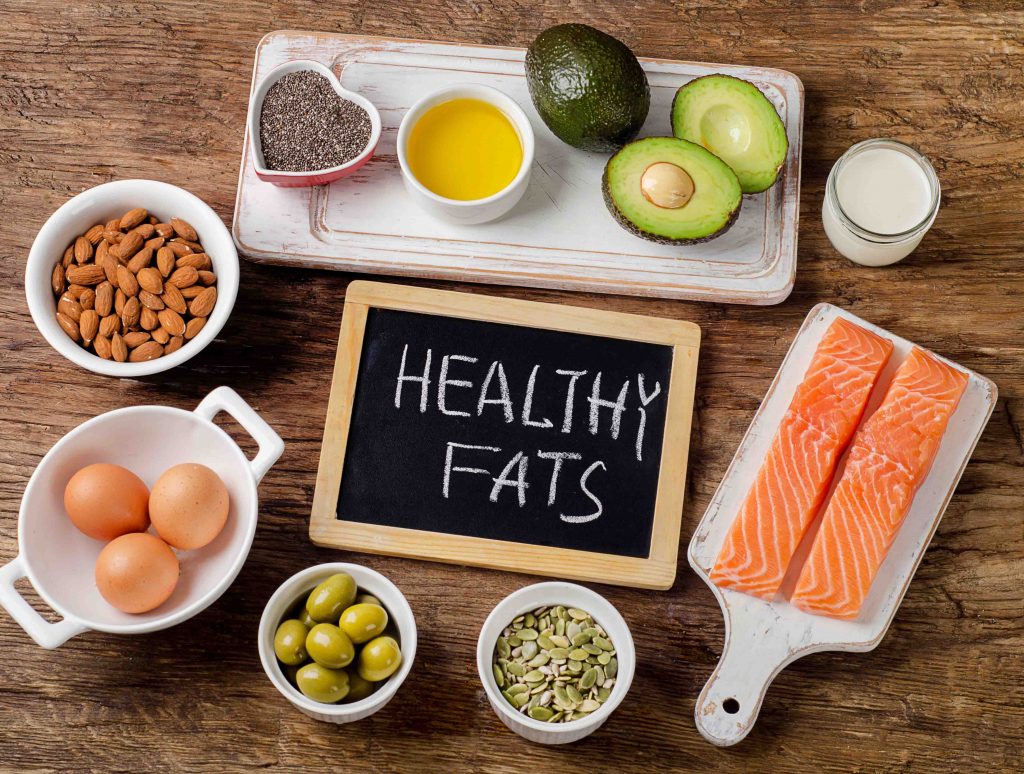Just “Going Keto” Isn’t Good Enough
By now, you’ve likely heard of many of the benefits of a ketogenic approach to eating. It helps with weight loss, hormone regulation, inflammation, blood sugar regulation, brain function, memory improvement, mood stabilization, improved mitochondrial function, resetting healthy gut bacteria, and much more.
Ketosis has also been shown to help specific conditions like, PCOS (Polycystic Ovary Syndrome), Metabolic Syndrome, Fatty Liver Disease, Parkinson’s, Alzheimer’s, Autism, Epilepsy, Cardiovascular Disease, Cancer … and more.

So, obviously “going Keto” is a great start!
The foundation of the ketogenic approach to eating is to eat high fat, low carb and moderate protein.
However, we can do even better.
I recommend a “modified” Ketogenic approach with the intent of improving health for the long-run vs. just focusing on the short-term results.
One of the most important health changes we focus on improving through diet and other lifestyle choices is that of Insulin Resistance… which is the precursor to a very serious and very predictable cascade of chronic, degenerative illness. Failure to correct the causes of Insulin Resistance can lead us down the path of pre-diabetes, fatty liver, metabolic syndrome, Type 2 Diabetes, heart disease, Alzheimer’s, and cancer! (Here’s a free webinar that will give you a better understanding.)
It’s worth taking it seriously when you can still do something about it! The Keto approach can do something about it… but tweaking the approach a bit can do even more.
The 4 main modifications I make to the standard Keto diet are:
Number One:
I believe we should always make the least toxic choices possible. Toxicity wreaks havoc on our current health and our health potential well in to the future. Therefore, it’s not good enough to simply “eat a bunch of fat” or just any type of protein for the sake of saying “I’m going Keto!” Clean it up! Choose HEALTHY (clean) fats & oils… the least toxic options available to you. Definitely choose organic and Non-GMO at every opportunity. Examples: avocado/avocado oil, olive oil/olives, coconut oil, grass-fed ghee and butter, macadamia nut oil, grass-fed hormone-free meats, wild caught cold water fish, pastured eggs, full fat hormone-free grass-fed dairy, etc. Quality matters.

Number Two.
In addition to improving WHAT you eat, improve WHEN you eat. This is the concept of “intermittent fasting” or “time-restricted eating”. It’s not about eating LESS… but rather eating LESS OFTEN. This is key in establishing a healthier set point for our insulin levels. Eating too often and eating too much sugar (carbs) keeps our insulin levels too high and leads to Insulin Resistance.
The easiest way to start is by moving toward being “fat adapted” and therefore better prepared to successfully step into intermittent fasting. We do this by eating REAL, whole foods vs. junk factory foods, adding more healthy fats to meals and reducing the emphasis on carbs/grains/starches.
Then we start to reduce the number of times food is consumed throughout the day, starting with eliminating some snacks, then all snacks, and eventually moving the meal times into a smaller “window” of time. Eg. have two nice, big, satisfying, high fat/low carb/moderate protein meals within an 8 hour window… then try a 6 hour window… then 4, etc.

Number Three.
VEGGIES! A strict keto junkie would likely frown upon eating many veggies since they ARE carbs, after all. Not me. Keto doesn’t tell you that you “can’t” have carbs, just that you need to keep their intake lower and ideally choose better sources of carbohydrates. (Exact numbers vary. What’s important is the amount YOU can consume and still get into ketosis. You can figure that out by measuring with a ketone/glucose blood monitor like MyKetoMojo.)
I recommend eating your veggies. I like the unique health-enhancing properties of plant-sourced phytonutrients. In addition to dark leafy greens as a regular player in our daily intake, I also especially appreciate the benefits of organic cruciferous vegetables like broccoli, Brussels sprouts, cauliflower, collard greens, cabbage, etc. and the role they can play in detoxifying endocrine disruptors and supporting the liver in our very toxic modern world.

Number Four.
Diet Variation. Many benefits of intermittent fasting and the ketogenic approach are actually maximized when we step OUT of this eating schedule and out of ketosis for a period of time. Diet variation is the strategic incorporation of “feast” and “famine” days to our eating schedules. On feast days we load up on healthy carbs and more protein than we’d normally consume while in ketosis, while famine days may include just one meal or none at all. I recommend incorporating diet variation on a weekly, monthly, seasonal and annual basis, and begin adding things like cellular detoxification and therapeutic/extended fasting seasonally or annually.
Diet variation is key if you’re concerned about the ketogenic approach &/or intermittent fasting interfering with your thyroid function or hormonal function in general.
(If you’re an adult female and would like to join our private Therapeutic Fasting group on Facebook, please send me a message through https://Facebook.com/DrMomOnline )
It’s diet variation that also takes into account the intentional re-focusing in your diet that forces your body to adapt to a change, and the body rises to meet the challenge. For example, you may choose a more plant-based diet for several weeks or months, or a more carnivorous diet, or a raw food diet… simply to mix things up glean the health benefits from different approaches to eating. Eating “seasonally” and locally can accomplish this, as well.

*****
By changing what we eat (both macronutrient-wise and the toxicity of what we eat), when we eat, and switching up our dietary patterns and trends regularly through diet variation, our big picture goals are to develop ‘resilience’ in our health, decrease inflammation, decrease toxicity, improve hormonal communication (optimization) and achieve metabolic flexibility.
To fully tap into the ‘resilience’ factor and maximize our longevity potential, we also need to address how & how often we’re moving our bodies, the quality of our sleep, how we respond to stress, our metabolic mitochondrial fitness, the health of our microbiome, and the ‘tone’ of our nervous system. Another time!
Pick up your 8-page healthy “menu” & nutrition guide and I’ll add in my Bull’s Eye Daily Nutrition Guide, Dr. Mom’s Top 20 Nutrition Tips, and my Recipes & Resources to go along with it all!
Use the discount code “Health1st” and you’ll SAVE $10!
Dr. Colleen Trombley-VanHoogstraat (“Dr Mom Online”) is a long-time personality in Natural Health & Wellness and is in her 24th year of active practice in Michigan, along with her husband Dr. Marc VanHoogstraat. She’s also the proud mom of two fabulous kiddos that she currently home schools – really, she’s more of their Manager at this point in their education!
Her unique perspective of the science of Wellness provides predictable solutions and transformational results for those struggling with chronic health issues, as well as those seeking lifelong health. To discover her simple strategies for creating better health through functional nutrition, movement, mindset, cellular detoxification, hormonal optimization, and metabolic re-setting, jump on board as a regular reader of Dr Mom Online when you plug in your name and email address and follow along on Facebook at https://www.facebook.com/drmomonline/





